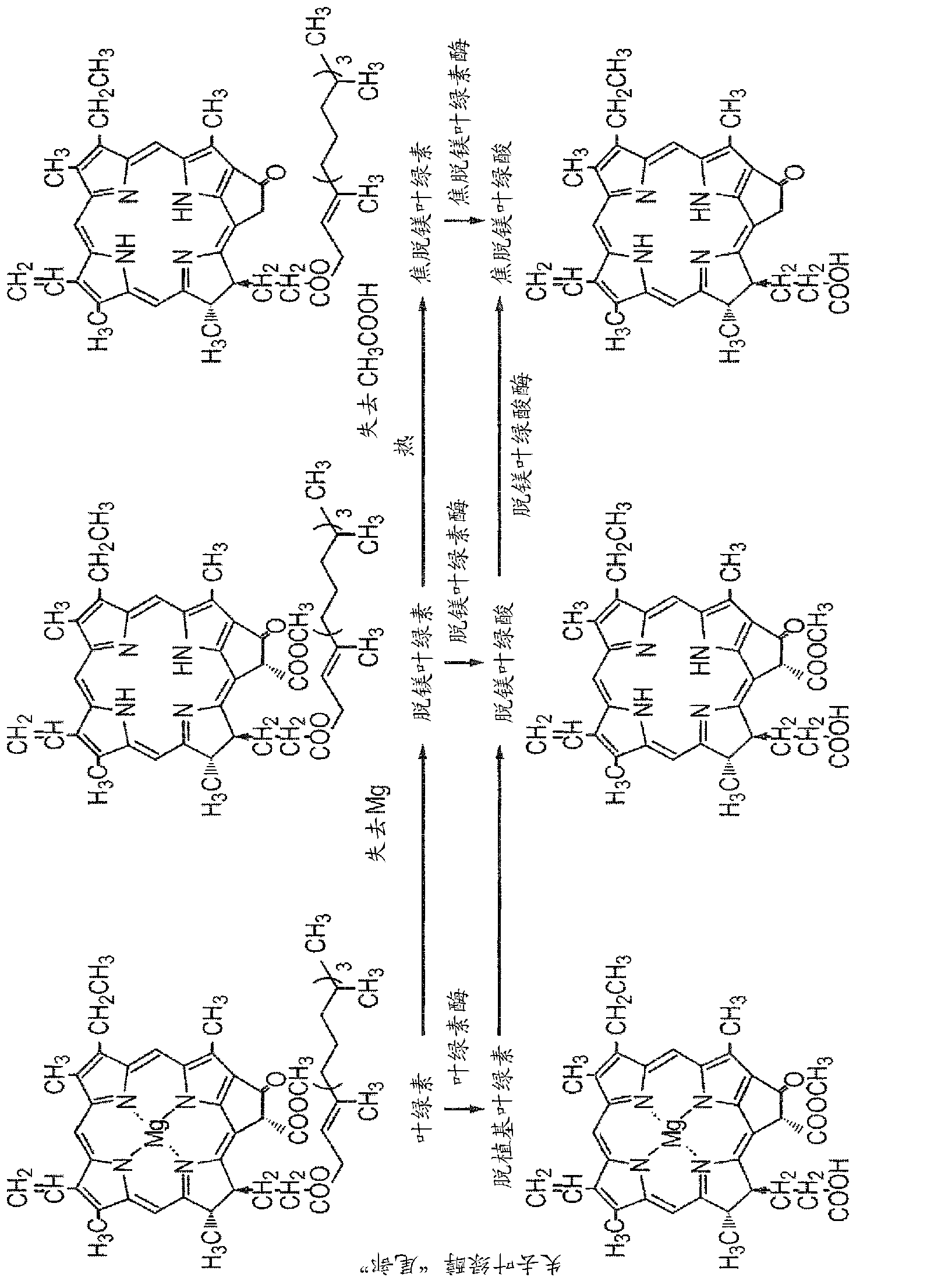Process
A technology for refining vegetable oil, weight, applied in the field of plant-based food and feed products, which can solve the problems of expensive use of clay, high disposal cost, danger, etc.
- Summary
- Abstract
- Description
- Claims
- Application Information
AI Technical Summary
Problems solved by technology
Method used
Image
Examples
example 1
[0249] Chlorophyllase from common wheat (Triticum triticum) in Bacillus subtilis Cloning and expression in
[0250] The nucleotide sequence (SEQ ID No.3) encoding wheat chlorophyllase (chlorophyllase) (SEQ.ID No.2, hereinafter referred to as wheat chlorophyllase (chlase)) is expressed in Bacillus subtilis, and it carries subtilis Bacillus alkaline protease (aprE) signal peptide (see Figure 17 ). For optimal expression in Bacillus, codon-optimized genes were ordered from GenScript Corporation, Piscataway, NJ 08854 (GenScript Corporation, Piscataway, NJ 08854, USA) construct (TRI_CHL).
[0251] Construct TRI_CHL consists of 20 nucleotides with a BssHII restriction site upstream of the wheat chlorophyllase coding region to allow fusion to the aprE signal sequence and a PacI restriction site downstream of the coding region for cloning into a Bacillus expression vector pBNppt.
[0252] Construct TRI_CHL was digested with BssHII and PacI and ligated to BssHII and PacI diges...
example 2
[0256] Cloning and Expression of Chlorophyllase from Chlamydomonas reinhardtii (Green Algae) in Bacillus subtilis
[0257] The nucleotide sequence (SEQ ID No.5) encoding Chlamydomonas chlorophyllase (chloryphyllase) (SEQ.ID No.4, hereinafter referred to as Chlamychlase (chlamy chlase)) was expressed in Bacillus subtilis, and Contains the Bacillus subtilis alkaline protease (aprE) signal peptide (see Figure 19 and 20 ). For optimal expression in Bacillus, codon-optimized gene constructs were ordered from GenScript Corporation, Piscataway, NJ 08854 (GenScript Corporation, Piscataway, NJ08854, USA) body (CHL_CHL).
[0258] Construct CHL_CHL consists of 20 nucleotides with a BssHII restriction site upstream of the Chlamydomonas chlorophyllase coding region to allow fusion to the aprE signal sequence and a PacI restriction site downstream of the coding region for cloning into Bacillus for expression Vector pBNppt.
[0259] Construct CHL_CHL was digested with BssHII and PacI...
example 3
[0263] Effect of Surfactant on Chlorophyllase Activity in Vegetable Oil
[0264] The activity of Arabidopsis chlorophyllase having the sequence of SEQ ID NO: 1 was tested in refined rapeseed oil by adding different surfactants including soybean lecithin. Prepare samples 1 to 6 containing the components defined in Table 1:
[0265] Table 1
[0266]
1
2
3
4
5
6
Refined Rapeseed Oil
g
10
10
10
10
10
10
g
0.2
0.2
Sorbitan Monooleate
g
0.2
0.2
Sorbitan Trioleate
g
0.2
0.2
0.5mg / ml chlorophyll in acetone
µl
250
250
250
250
250
250
Chlorophyllase* in buffer*
ml
0
0.25
0
0.25
0
0.25
buffer*
ml
0.3
0.05
0.3
0.05
0.3...
PUM
 Login to View More
Login to View More Abstract
Description
Claims
Application Information
 Login to View More
Login to View More - R&D
- Intellectual Property
- Life Sciences
- Materials
- Tech Scout
- Unparalleled Data Quality
- Higher Quality Content
- 60% Fewer Hallucinations
Browse by: Latest US Patents, China's latest patents, Technical Efficacy Thesaurus, Application Domain, Technology Topic, Popular Technical Reports.
© 2025 PatSnap. All rights reserved.Legal|Privacy policy|Modern Slavery Act Transparency Statement|Sitemap|About US| Contact US: help@patsnap.com



